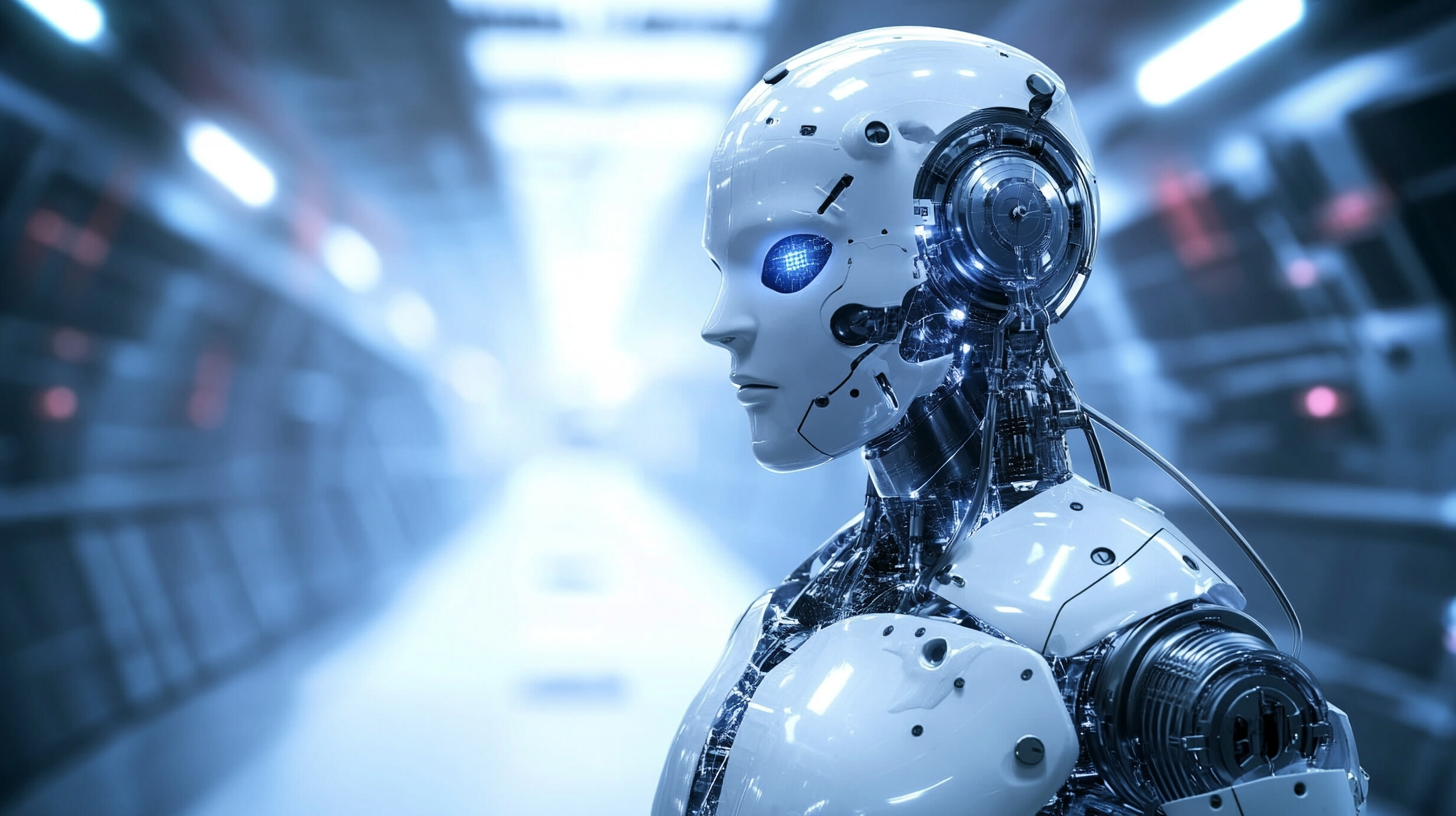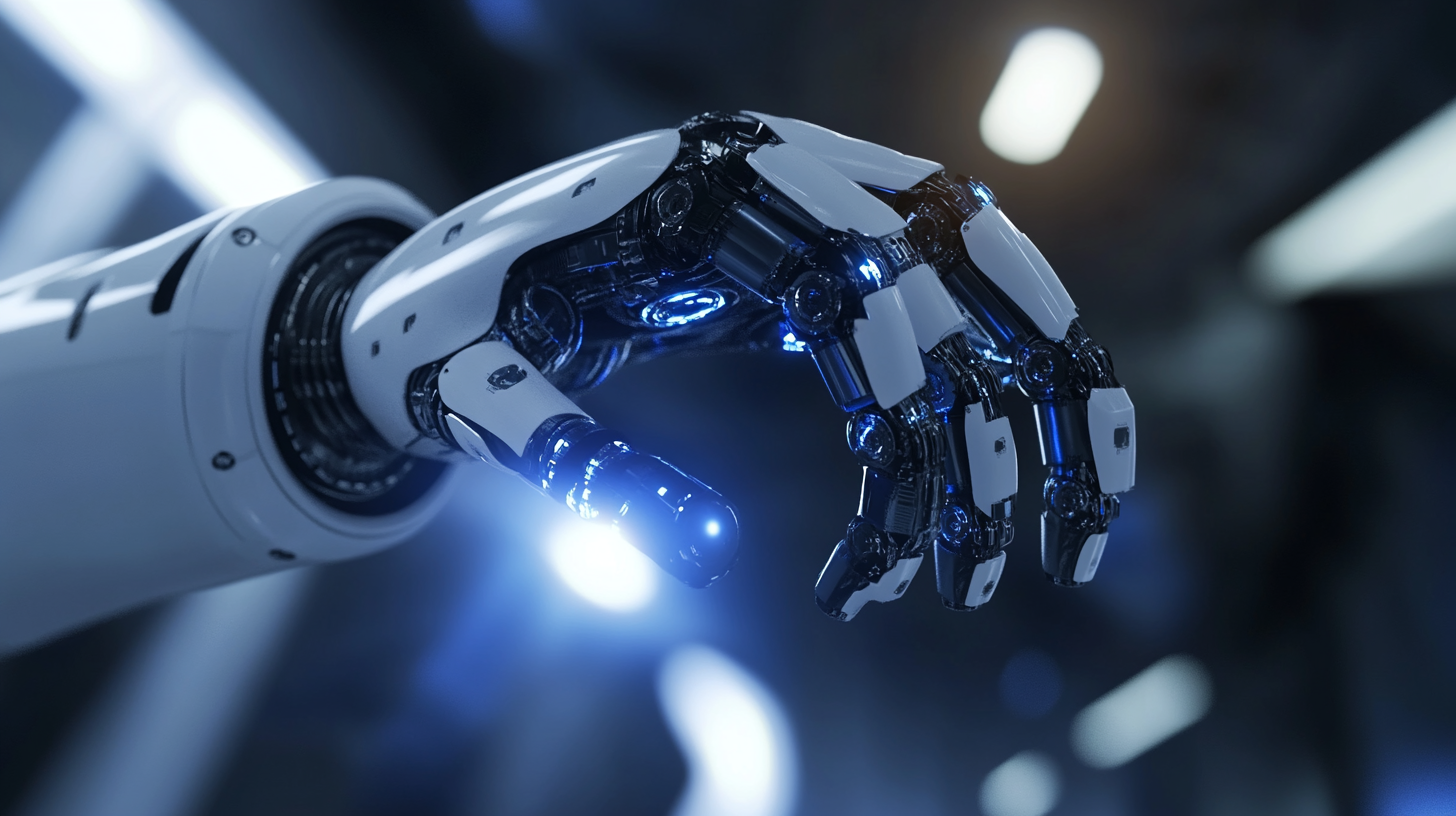

14, Raghava Enclave, Transport Road, Secunderabad, Hyderabad (500009)
©2024 All Rights Reserved by excitechrobot.com
In an era where technological advancement is accelerating at an unprecedented pace, Rapid Robotics is set to redefine the landscape of automation. According to a report by McKinsey, automation technologies could increase global productivity by 0.8% to 1.4% annually, with the manufacturing sector experiencing a significant transformation through the integration of robotics and AI. The World Economic Forum predicts that by 2025, nearly 85 million jobs may be displaced by automation, yet an estimated 97 million new roles will emerge that require human skills complemented by advanced robotic technologies. This shift towards automated solutions not only enhances operational efficiency but also drives innovation across various industries, positioning Rapid Robotics as a key player in the journey towards Industry 2025. As we explore the best practices in adopting Rapid Robotics, organizations must embrace these trends to thrive in a rapidly evolving economic landscape.

The Rise of Rapid Robotics in Industrial Automation
As we venture deeper into the era of Industry 2025, rapid robotics is emerging as a game-changer in industrial automation. According to a recent report by McKinsey, the implementation of robotics in manufacturing processes could increase productivity by up to 30% by 2025. This advancement not only promises enhanced efficiency but also significantly reduces operational costs. Companies are increasingly investing in agile robotic solutions that adapt quickly to changing production needs, contributing to shorter lead times and greater flexibility in manufacturing.
 To successfully integrate rapid robotics into your operations, consider these tips: First, assess your specific needs and identify areas where automation can deliver the highest return on investment. Whether it's assembly, packaging, or material handling, targeting the right processes can yield substantial benefits. Second, focus on employee training and engagement; ensuring that your workforce is prepared to work alongside robots can enhance productivity and promote a culture of innovation. Lastly, keep an eye on emerging trends in AI and machine learning, as these technologies complement rapid robotics, enabling smarter decision-making and improved operational efficiency.
To successfully integrate rapid robotics into your operations, consider these tips: First, assess your specific needs and identify areas where automation can deliver the highest return on investment. Whether it's assembly, packaging, or material handling, targeting the right processes can yield substantial benefits. Second, focus on employee training and engagement; ensuring that your workforce is prepared to work alongside robots can enhance productivity and promote a culture of innovation. Lastly, keep an eye on emerging trends in AI and machine learning, as these technologies complement rapid robotics, enabling smarter decision-making and improved operational efficiency.
In light of the growing reliance on rapid robotics, experts forecast that the global market for industrial robots will reach $70 billion by 2025, as noted in a comprehensive report by Statista. This expansion reflects the increasing recognition of robotics as a pivotal element in achieving operational excellence and sustaining competitive advantage in the industrial sector. As organizations pivot towards automation, embracing this technological shift will be essential for thriving in the future landscape of manufacturing.
Automation technology is rapidly transforming industries, and embracing these advancements comes with a multitude of advantages. One significant benefit is increased efficiency. Automated systems can handle repetitive tasks at a faster pace and with greater accuracy than humans, which can significantly reduce production time and operational costs. Companies that adopt automation are often able to scale their operations while maintaining quality, leading to higher profitability in the long run.
Tips for Embracing Automation:
Start by identifying key areas in your workflow that are repetitive and time-consuming. Small changes, like implementing robotic process automation for data entry, can yield quick results. Moreover, ensure that your team is equipped with the necessary training to work alongside new technologies, fostering a culture of adaptability and ongoing improvement.
Another advantage of embracing automation is enhanced data analysis capabilities. Automated systems can collect and analyze vast amounts of data in real time, providing insights that drive better decision-making. Businesses can leverage this data to identify market trends, streamline supply chains, and improve customer experience, thereby staying competitive in an ever-evolving market.
Tips for Data Utilization:
Invest in analytics tools that integrate with your automation systems. Regularly review the insights gained, and utilize them to inform strategic planning. Remember, the key to maximizing the benefits of automation lies not just in implementation but also in continually refining processes based on data-driven results.
As industries prepare for the advancements of 2025, several key trends are taking shape, driven largely by automation and robotics. According to a recent report by McKinsey, automation could boost global productivity by as much as 1.4% annually. This projection underscores the importance of embracing rapid robotics technologies, which not only enhance operational efficiency but also enable businesses to adapt to market changes swiftly. The integration of AI and machine learning in robotics further accelerates this change, allowing for predictive maintenance and smarter resource allocation.
**Tip:** To successfully navigate the transition towards automation, organizations should invest in upskilling their workforce. Research from the World Economic Forum suggests that by 2025, over 85 million jobs may be displaced by the shift to automation, but at the same time, about 97 million new roles could emerge. Understanding how to train employees for these new positions will be critical for companies looking to maintain a competitive edge.
Another trend shaping the future is the rise of collaborative robots, or cobots, which are designed to work alongside humans. A report from ABI Research estimates that the global cobot market will reach $12 billion by 2025. These systems not only improve productivity but also significantly enhance safety in the workplace by reducing human error and strain.
**Tip:** Companies should carefully assess their operations to identify areas where cobots can be integrated, ensuring that both tech and employees can work synergistically to maximize benefits.
| Trend | Description | Impact on Industry | Expected Adoption Year |
|---|---|---|---|
| Collaborative Robots (Cobots) | Robots designed to work alongside humans in a shared workspace. | Increase in efficiency and productivity, reduction in workplace injuries. | 2025 |
| AI-Powered Automation | Utilizing artificial intelligence to optimize processes. | Enhanced decision making, predictive maintenance, and resource management. | 2025 |
| Remote Monitoring & Control | Using IoT devices for real-time monitoring and remote administration. | Improved operational efficiency and reduced downtime. | 2024 |
| 3D Printing Integration | Integration of 3D printing into manufacturing processes. | Reduced material costs and lead times for production. | 2025 |
| Blockchain in Supply Chain | Utilizing blockchain for transparency and traceability in supply chains. | Increase in supply chain integrity and trust among stakeholders. | 2025 |
As industries move towards 2025, the embrace of automation through robotic solutions is not merely an option but a necessity for maximizing efficiency. According to a recent report by McKinsey, companies that integrate automation can achieve up to a 30% increase in productivity. This shift is driven by the need for agile operations and the ability to swiftly respond to market changes. Rapid robotics technology not only enhances operational speed but also reduces human error, maintaining high standards of quality control.
To leverage robotic automation effectively, businesses should consider implementing modular systems that can easily adapt to various tasks. This flexibility allows for a seamless transition as demands evolve. **Tip:** Regularly assess the performance of robotic systems and invest in continuous training for staff to ensure they can work alongside these machines effectively. Additionally, integrating AI and machine learning with robotics can optimize processes, making real-time adjustments that enhance efficiency.
Another crucial aspect is data utilization. Companies that harness the power of data analytics alongside their robotic solutions can uncover actionable insights that drive performance improvements. **Tip:** Establish a feedback loop where insights from robotic operations inform further automation developments, ensuring that your robotic solutions are always aligned with business goals and market needs. By strategically utilizing automation, businesses can not only improve their productivity but also position themselves as leaders in their industries as they approach 2025.
In today's fast-paced business landscape, future-proofing your organization requires an adaptable approach to automation. As industries evolve towards Industry 2025, it is crucial to implement advanced automation strategies that not only enhance efficiency but also allow for scalability and innovation. Businesses that embrace rapid robotics stand to gain a competitive edge, as these technologies streamline operations and reduce human error, enabling companies to focus on strategic growth.
To future-proof your business, consider integrating advanced robotics solutions that offer flexibility and customization. These systems can be tailored to fit specific production needs, ensuring that your operations can pivot with market demands. An effective automation strategy involves training your workforce to work alongside these technologies, fostering a culture of continuous improvement and learning. By investing in these advanced solutions, organizations position themselves not just to survive but to thrive in the era of automation, maintaining relevance and driving sustainable growth.

